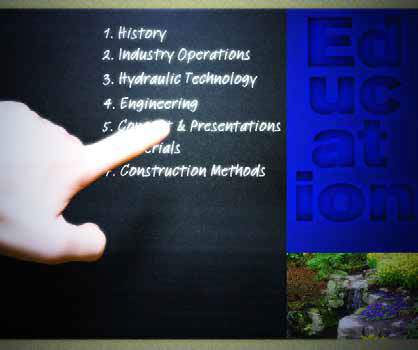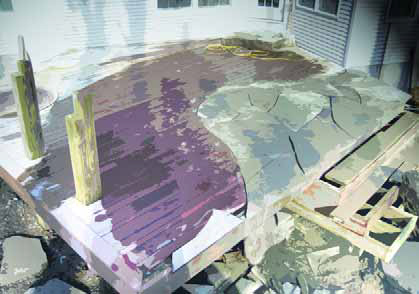ARTICLES
Advance Search
Aquatic Health
Aquatic Health, Fitness & Safety
Around the Internet
Aquatic Culture
Aquatic Technology
Artful Endeavors
Celebrity Corner
Life Aquatic
Must-See Watershapes
People with Cameras
Watershapes in the Headlines
Art/Architectural History
Book & Media Reviews
Commentaries, Interviews & Profiles
Concrete Science
Environment
Fountains
Geotechnical
Join the Dialogue
Landscape, Plants, Hardscape & Decks
Lighter Side
Ripples
Test Your Knowledge
The Aquatic Quiz
Other Waterfeatures (from birdbaths to lakes)
Outdoor Living, Fire Features, Amenities & Lighting
Plants
Ponds, Streams & Waterfalls
Pools & Spas
Professional Watershaping
Structures (Editor's Notes)
Travelogues & History
Water Chemistry
WaterShapes TV
WaterShapes World Blog
Web Links
Around the Internet
Aquatic Culture
Aquatic Technology
Artful Endeavors
Celebrity Corner
Life Aquatic
Must-See Watershapes
People with Cameras
Watershapes in the Headlines
I think we can all agree that design communication between architects, engineers, designers and contractors should be clear and concise. If that’s the case, it follows that plans and other construction documents should be uniform in their organization and layout – in other words, that they should follow a set of standards to which everyone in the design/construction community can and will adhere. Why the bother? The plain fact is that any given project involves a cast of characters that will be different – sometimes completely so – from just about any other project. This is why I’m such a strong advocate for
In the often wild and woolly world of custom landscape and watershape design, it’s sometimes impossible to predict the sources of the most interesting and challenging projects – or anticipate how we manage to find our ways into the middle of them. It’s all part of what makes this profession so uplifting at times – and so confounding at others. I’ve worked hard to accept and embrace the strange tides of fortune this business entails. As a case in point, this month (and next) I’m going to relate a story that captures the essence of what it can take to accommodate the unexpected and enlist the nerve it sometimes takes to
I’ve always believed that pessimism is useless. At times, I think it can even be destructive, which is why I personally beat the drum for positive thinking every chance I get. Sure, there are always going to be those who accuse optimists like me of seeing the world through rose-colored glasses, but I counter that by saying that I also believe that optimism is worthless if positive thoughts aren’t backed up by equally positive actions. That this is the foundation of my philosophy should be obvious to
It’s great when people start talking about important issues – and satisfying to have a hand in provoking those discussions. In the past 18 months or so, you may have noticed that we at WaterShapes have published occasional articles about swimming, aquatic activity and hydrotherapy as they relate to
People who live in and around Hilton Head Island, S.C., cherish the memory of Charles Fraser, the visionary developer who set the standard for the way communities look along vast stretches of the Carolina coast. Most prominently, he pioneered progressive land-planning standards 50 years ago in developing Sea Pines, one of the first communities to incorporate environmental preservation as part of the development, take its design cues from nature and support the concept with land covenants and restrictions. Fraser’s vision for Sea Pines has since become the foundation for many planned communities worldwide and embodies a philosophy that has, in the intervening years, spread throughout the country. Indeed, our firm – Wood+Partners of Hilton Head – has always endeavored to adhere to this approach in planning communities that are situated in and around natural environments. Most of the time, that means we work (as Fraser did) with water as a central amenity, whether the setting borders a lake, the ocean, a river or a natural wetland area. As we see it, our mission is to preserve and, where we can, even
My dictionary defines a rill as a small stream cut by erosion. In the practice of watershaping, however, that colorful little word has been stretched to cover manufactured channels in which we artfully move water from one place to another. These often-subtle effects have a history dating at least to the 5th Century BC, when Persian kings demonstrated their power over nature by using rills to bring water – a symbol of fertility as well as a practical means of cooling architectural spaces – from rivers and aqueducts to their palaces. These early rills were observed and adopted by Muslim designers and engineers who rose to eminence in the Middle East more than a millennium later and were carried along as Islamic influence spread through India, North Africa and, eventually, Spain, where signature elements of Moorish architecture are still seen today in the famous
You don’t have to be a physician to know that watershapes offer profound benefits when it comes to health, fitness and wellness. Indeed, most people know that swimming and other forms of activity in water are, along with hydrotherapy, among the healthiest of all activities known to us mere mortals. Unfortunately, and for reasons that escape me, promoting the value of that connection has never spent much time on our industry’s front burner. My own curiosity about the topic recently led me to seek published resources, and I’m sad to say that my search hasn’t yielded much. It reminds me of my early days in this industry and a time long ago when I craved books that would inspire my design work: For a long time, there wasn’t much to find – but that’s all changed now. My hope is that the case with water-related health and wellness is the same and that it will soon become a
It’s an unfortunate fact that landscape architects receive little or no formal education in watershaping while they’re in school. As a result, where the typical landscape architect’s irrigation plan will show every pipe, fitting, wire and component for a given project, that same project’s pool plan will carry almost no detail at all. This phenomenon begs the question: Why don’t our colleges and universities do more to educate landscape architects about watershaping? The answer to this question causes me double pain, because I know full well that
I’m sort of a curmudgeon when it comes to wood decks. They’ve been on the scene for a good 50 years now, and many of them are just fine – but I’ve spent an awful lot of time in my career loathing what I see and helping my clients remedy the short-sightedness of those who set them up in the first place. At times, I just wish everyone had stuck to stone. What really gets my goat are the uninspired linear expanses that poke aimlessly off the backs of houses. Residential developers often resort to






















